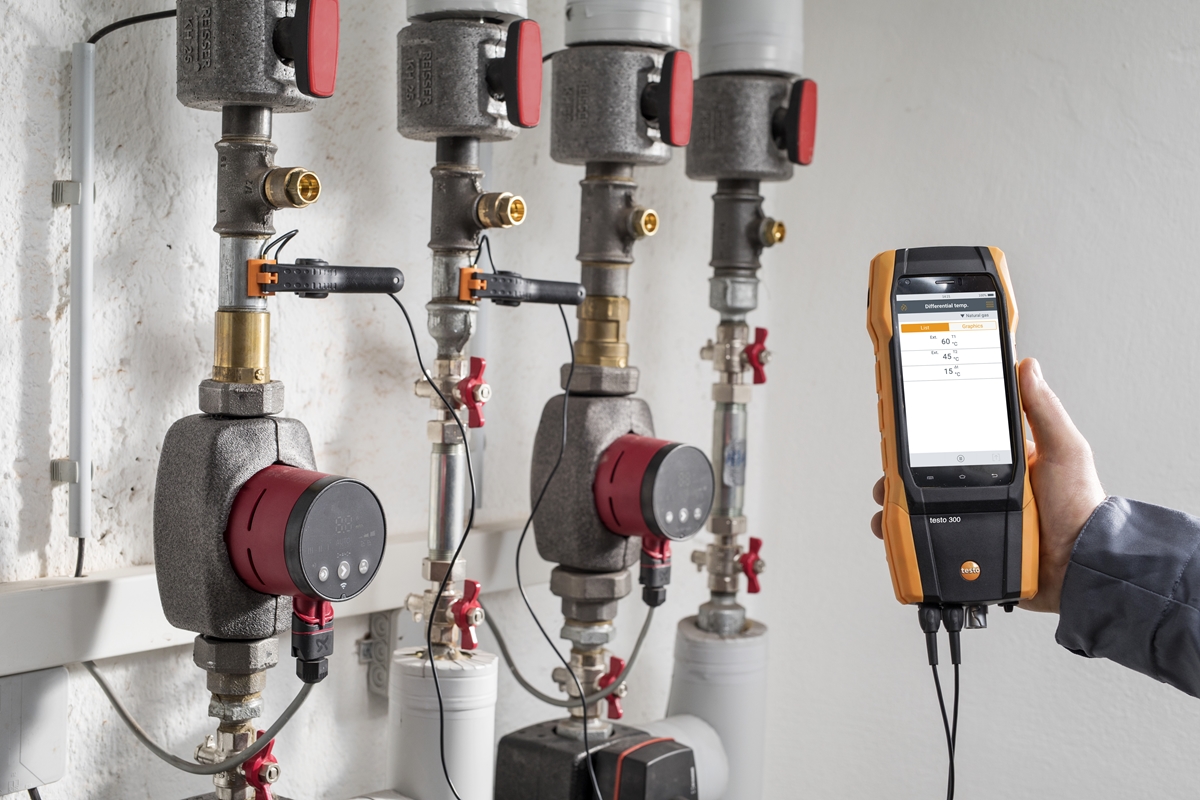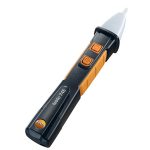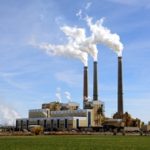The term ‘flue gas’ refers to the gas emissions that are generated during the combustion process and emitted via a building’s chimney or flue.
In the past, flue gas analysis was time consuming and expensive. However, modern advancements in technology mean that analysing flue gas is now cheaper and easier than ever before.
But how does a flue gas analyser work?
How a flue gas analyser works
A flue gas analyser is used to measure the emissions of household appliances and monitor their safety. It does so by determining how much harmful gas the appliances produce. Flue gas typically consists of the following:
- Carbon dioxide
- Nitrogen
- Sulfur
- Water vapour
- Oxygen
- Carbon monoxide
- Solids (dust, soot)
- A number of other pollutants
Of those emissions, the most harmful is carbon monoxide. It is colourless and odorless, making it difficult to detect, and large amounts can kill someone quickly. A flue gas analyser can detect this risk among others by testing the appliance or by monitoring ambient air.
How to use a flue gas analyser
To monitor an appliance, place the probe of the analyser in the exhaust of the appliance you are measuring. The sensor in the analyser will be able to detect the gas emissions that the appliance releases. The results will appear on the digital screen, informing you of the risk of poisoning as well as the efficiency of the appliance.
Monitoring ambient air is similar to calculating flue gas measurements, however, you will instead conduct a combustion analysis in open air. A flue gas analyser is a useful measuring instrument for ensuring that the air in a building is safe. Some gases, like carbon monoxide, are very deadly, so significant amounts of these gases detected in the open air is a hazard.
What flue gas analyser readings should be
The desired readings of a flue gas analyser vary by which gas emissions you are measuring as well as the appliance you are testing.
The CO/CO2 ratio, which is the amount of carbon monoxide measured against the amount of carbon dioxide in the exit flue of an appliance, should be below 0.004 if running efficiently. Any level above that warrants an investigation of the appliance, and a CO/CO2 ratio above 0.008 is considered dangerous.
A carbon monoxide level below 100 parts per million (ppm) is considered safe, but anything above that is potentially dangerous. Additionally, oxygen levels should not exceed 5% for gas appliances or 8% for oil appliances.
In measuring ambient levels of carbon monoxide, a reading of fewer than 9ppm is considered good, and anything above 35ppm is dangerous and requires immediate action.
Types of flue gas analysers
Decades ago, flue gas analysers were large, difficult-to-operate pieces of equipment. However, today, flue gas analysers can be made portable. Our products are lightweight, compact, and easy to use and transport.
The right flue gas analysis for your needs will depend mainly on what type of generator you are inspecting. We can help you find the right one.
Different devices come with a variety of different features. Some gas analysers come with specially designed printers that enable users to quickly and easily create simple, clear reports while on the work site.
If you simply intend to take basic measurements on small-scale firing installations, then an affordable solution such as testo 310 Flue Gas Analyser Set 1 will be more than sufficient.
Alternatively, anyone analysing large combustion plants, an industrial engine, a gas turbine or an industrial furnace, will need a top of the line emissions analyser such as the testo 350 Multiple Sensor Gas Analysis System.
If you are unsure about which flue gas analysis tool or emissions analyser is most appropriate, consider getting in touch with an expert who can talk you through your options and help you identify a cost-effective yet reliable solution.
How Testo can help
As the world leader in portable and stationary measurement equipment, Testo is an authority on flue gas and flue gas analysis.
Testo stocks a wide variety of devices designed to measure, analyse and document flue gas and determine whether combustion systems are running at the optimum settings, meeting environmental compliance rulings and most importantly, maintaining safe emissions levels.
Contact us today for more information.









 Reduce cooking oil costs while ensuring quality
Reduce cooking oil costs while ensuring quality Expert knowledge on CO2 monitoring
Expert knowledge on CO2 monitoring Refrigeration knowledge - in 3 modules
Refrigeration knowledge - in 3 modules



